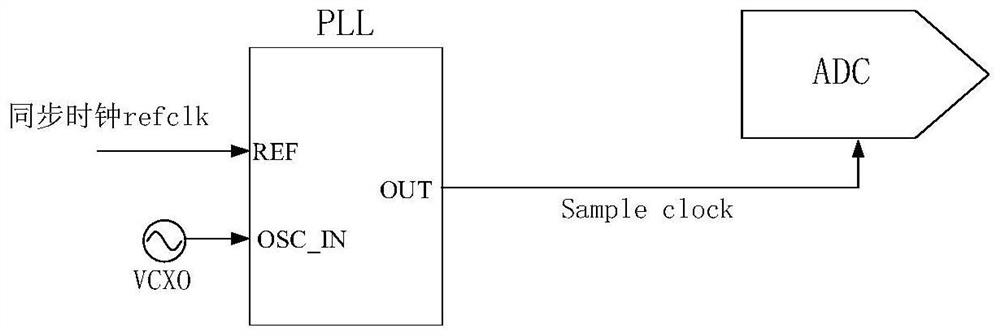A near-field receiving device for improving the signal-to-noise ratio of magnetic resonance
A receiving device, a technology of signal-to-noise ratio, applied in the field of electronic information, to achieve the effect of improving the signal-to-noise ratio and avoiding interference
- Summary
- Abstract
- Description
- Claims
- Application Information
AI Technical Summary
Problems solved by technology
Method used
Image
Examples
Embodiment Construction
[0029] The technical solution of the present invention will be further described below in conjunction with the accompanying drawings.
[0030] In order to ensure the phase coherence of the transmitter and receiver, the transmitter is usually located in the main system, so the clock of the near-field receiver must be synchronized with the transmitter. A near-field receiving device for improving the magnetic resonance signal-to-noise ratio of the present invention includes a synchronous clock reference circuit, an ADC sampling clock stabilization circuit, a switching ripple frequency control circuit of a switching power supply, and an ADC sampling circuit;
[0031] The synchronous clock reference circuit includes a photoelectric conversion unit, a clock recovery unit, a clock shaping unit, and a reference clock selection unit, such as figure 1 Shown; This Fangming provides two ways for transmitting the synchronous reference clock from the main system to the near-field receiver. ...
PUM
 Login to View More
Login to View More Abstract
Description
Claims
Application Information
 Login to View More
Login to View More - R&D
- Intellectual Property
- Life Sciences
- Materials
- Tech Scout
- Unparalleled Data Quality
- Higher Quality Content
- 60% Fewer Hallucinations
Browse by: Latest US Patents, China's latest patents, Technical Efficacy Thesaurus, Application Domain, Technology Topic, Popular Technical Reports.
© 2025 PatSnap. All rights reserved.Legal|Privacy policy|Modern Slavery Act Transparency Statement|Sitemap|About US| Contact US: help@patsnap.com



